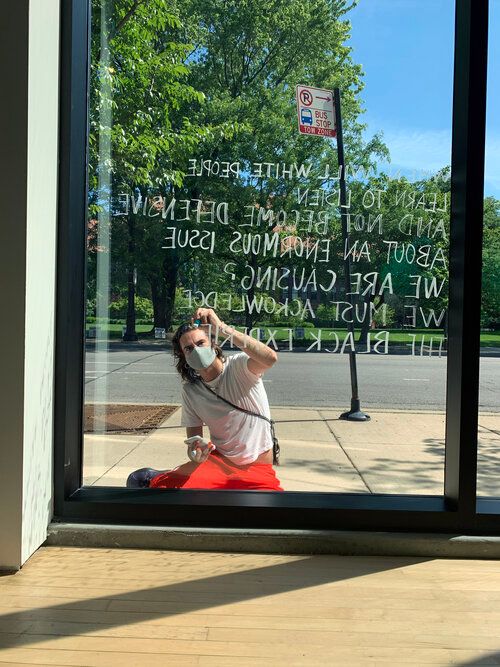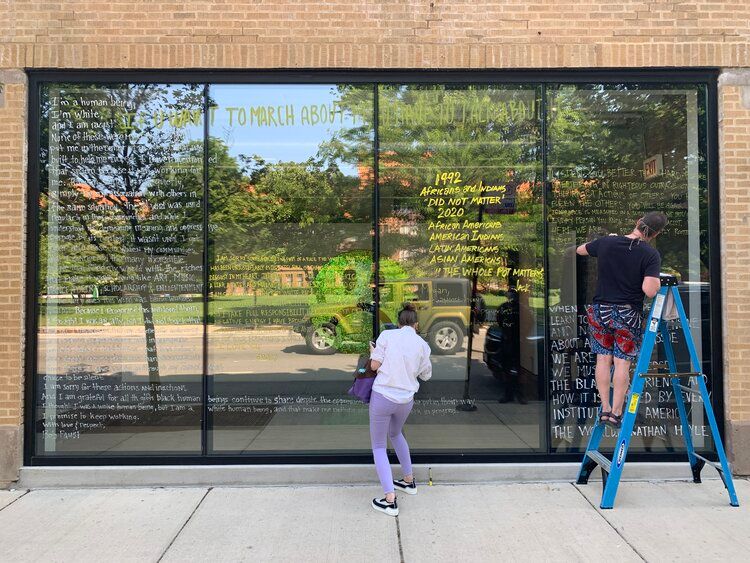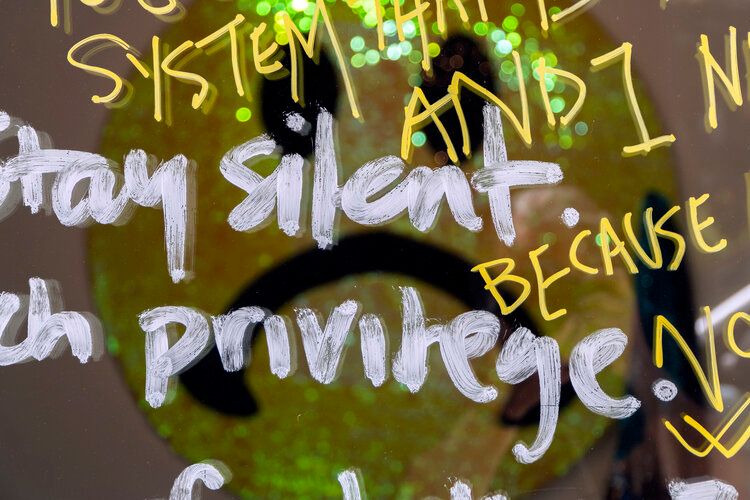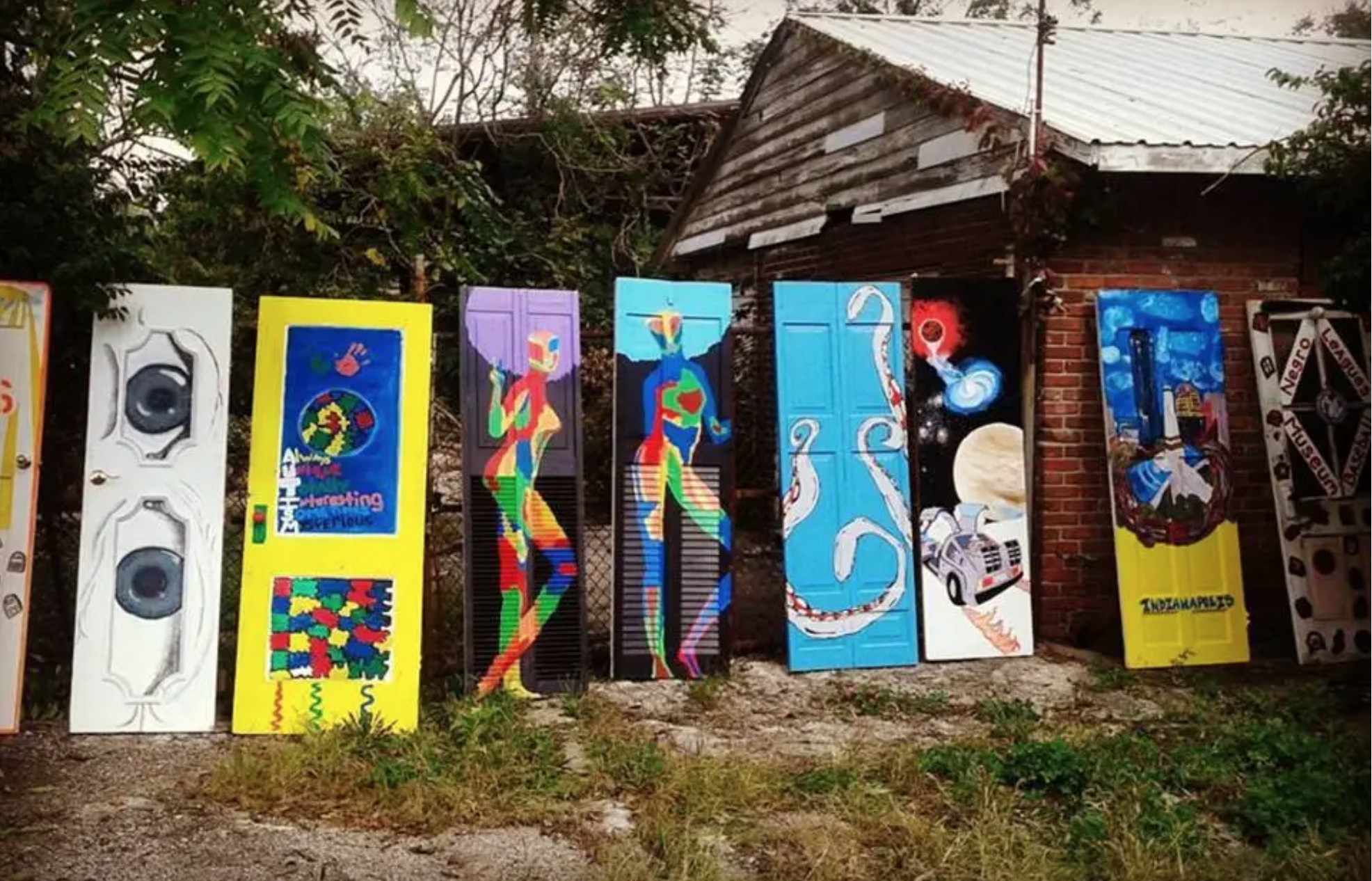Vol. 1, No. 3
Welcome back to The Inclusive Community. We're happy you're here!
This week, I'm working with a wonderful artist to develop a custom banner for our newsletter. I'm excited by the progress and can't wait for you to see it! That project and the beauty of spring have me thinking today of art.
A recent New York Times opinion article by David Brooks, reminded me of the many roles that art can play in our lives. Note: this link will be good for 2 weeks.
In the article, David said,
"I sometimes feel I’m in a daily struggle not to become a shallower version of myself...So I’m trying to take countermeasures. I flee to the arts."
Perhaps his words speak to your heart, as they did to mine.
ART AND THE PRACTICE OF GROUNDWORK
We've identified six practices for creating a more inclusive and equitable community. One practice is the practice of GroundWork, which is all about preparing the community soil for the changes that will be necessary. It is also about reaching out to touch hearts and minds across the community and motivating others to join in this work. Art can be an important part of the practice of GroundWork.
Art can open us, but it can also be used to challenge, provoke, and motivate change. It can take us into deep self-reflection, and it can sustain us and give us strength for the difficult journey ahead. It can be used to recognize and celebrate as well as build community and foster a stronger sense of community identity.
We have a number of podcast episodes that focus specifically on visual art. I've pulled them together in our Art Collection. If you love art and want to find inspiration for how art can become part of your equity and inclusion work, these episodes are for you.
If you don't have time to listen today, here are a few of the many takeaways from these episodes.
TAKEAWAYS
-Art as a Way Into Community Conversation
Our discussion with Bob Faust and Nick Cave taught us that art can offer new ways into the conversation around equity and inclusion. It can also offer a way for a community to process difficult experiences and heal. In their AMENDS project, Bob and Nick used their creativity and art to co-create a community conversation with one thousand of their neighbors in response to the murder of George Floyd. That was community conversation at scale.
Through this project, the artists gave their community a collective way to process the emotions of that horrific time, a way into that conversation. Phase I was about hope, writing letters toward the eradication of racism. In Dirty Laundry, it was about reflection and about honesty. It was about what The Practice of Adaptive Leadership calls “owning our part of the mess.” Finally, it was about a shared call to action. Through this project, Nick and Bob reminded us that art can have even more impact on the street than in a studio or gallery.



Images of community members using storefront windows to write their letters to the eradication of racism as part of the AMENDS installation.
-Art as an Act of Co-Creation
Nick and Bob didn’t create AMENDS alone. It was a co-creation between the artist and community members. In talking with Nick and Bob, they talked about this notion of co-creation. Bob shared that:
“We talk about collaboration all the time, and I think that definition is really, really broad. Sometimes it seems like collaboration is just contributing to something that gets used in something bigger. But our collaboration is really when somebody brings something to the table that changes the way that the initial idea is to be delivered. It's when two or more ideas get mixed together and make something new, not one that sits adjacent to but augments. So, co-creation takes a lot of guts, and a lot of trust, to move through some worry and some fear about what it's going to be and know that by choosing to go through that path, it will be stronger because so many more energies have been mixed into the pot.”
-Using Art to Meet People Where They Are
I also discussed art with Monique Davis from the Mississippi Museum of Art and their Center for Art and Public Exchange, or CAPE. CAPE’s methodology “centers around the power of art to change lives, coupled with the viewer’s agency to make meaning in dialogue with art.” Isn’t that a wonderful ambition?
Monique told us of one initiative where CAPE sponsored grants to artists and local communities to co-create artwork in smaller towns where they did not have physical access to the museum’s collections. She also reminded us that with any piece of art, we can experience it at a surface level. Still, with guidance, patience, and time we may also go much deeper into the metaphor or experience that the art offers.
Monique offered some words of wisdom that I find particularly helpful.
-Your Community Already Possesses the Necessary Gifts and Talents
Suzanne Thomas, in her interview, talked about an exhibition done by her organization, Inclusion in Art. The exhibition was called the Spirit of Color. They used this exhibition to highlight artists of color who’d been doing art in Oklahoma for decades. Some for as many as fifty years.
Everyone was just floored by it. Who knew that we had this talent here all this time? I’m glad we were able to bring these people and give them that space and that honor to show that this has always been here.
One of the things that I also loved about my discussion with De’Amon Harges and about his story is the emphasis in all he does to think in terms of asset-based and how to build from what is at hand, leveraging the talents and gifts naturally found in abundance throughout a community. In his community, they have done small and large projects, but they have always built from a foundation of the gifts, talents, and relationships that existed in their community.
-Using Art to Build Community Culture and Identity
In my discussion with De'Amon Harges, he shared the story of an art grant they won to tell individual stories of their neighborhood through paintings on old salvaged doors. Across the neighborhood, these doors are now displayed on people's porches and in front of their houses. Their community has become known as the neighborhood that tells their stories on doors.
De'Amon's story of the doors highlights that community culture and community identity don’t always come from an explicit strategy. Sometimes, the most powerful elements of culture and identity emerge serendipitously when you are not thinking about creating culture at all, but simply acting together as a community.
This story also holds some type of warning for us. Sometimes our community identity is not defined by us, but by how others see us. Community culture and identity are precious things to be nurtured, continuously cultivated, and protected.

CONCLUSION
There are no recipes or formulas for this work. Every community is unique, just as every community has unique gifts and talents. I trust you'll find the best way forward for your own community. Let me just leave you some questions to ponder and discuss with your neighbors as you consider how best to move forward.
How can your community use art as a way to help prepare the hearts and minds all across the community? Can you find a way to use art to help to enable difficult conversations or bring unlikely groups together? How can you use art to help co-create community conversations on a broad scale? Are you bringing your beautiful and powerful art out of the gallery and into the street, maximizing its impact and reach? Are you using your community's art to build and deepen inclusive and equitable culture? Are you making art that is both personal and local, meeting people where they are? Does your art offer opportunities for interaction at different levels and for deepening over time? Are you using art to stimulate, challenge, motivate, even create a call to action? Are you recognizing, celebrating, and building on the talents and gifts that already exist within your own community? Are you building an inclusive art ecosystem where a community of diverse artists is given an opportunity to thrive?
Thanks for reading. We'd love to hear from you. Sign-up to leave us a comment.
Ame


